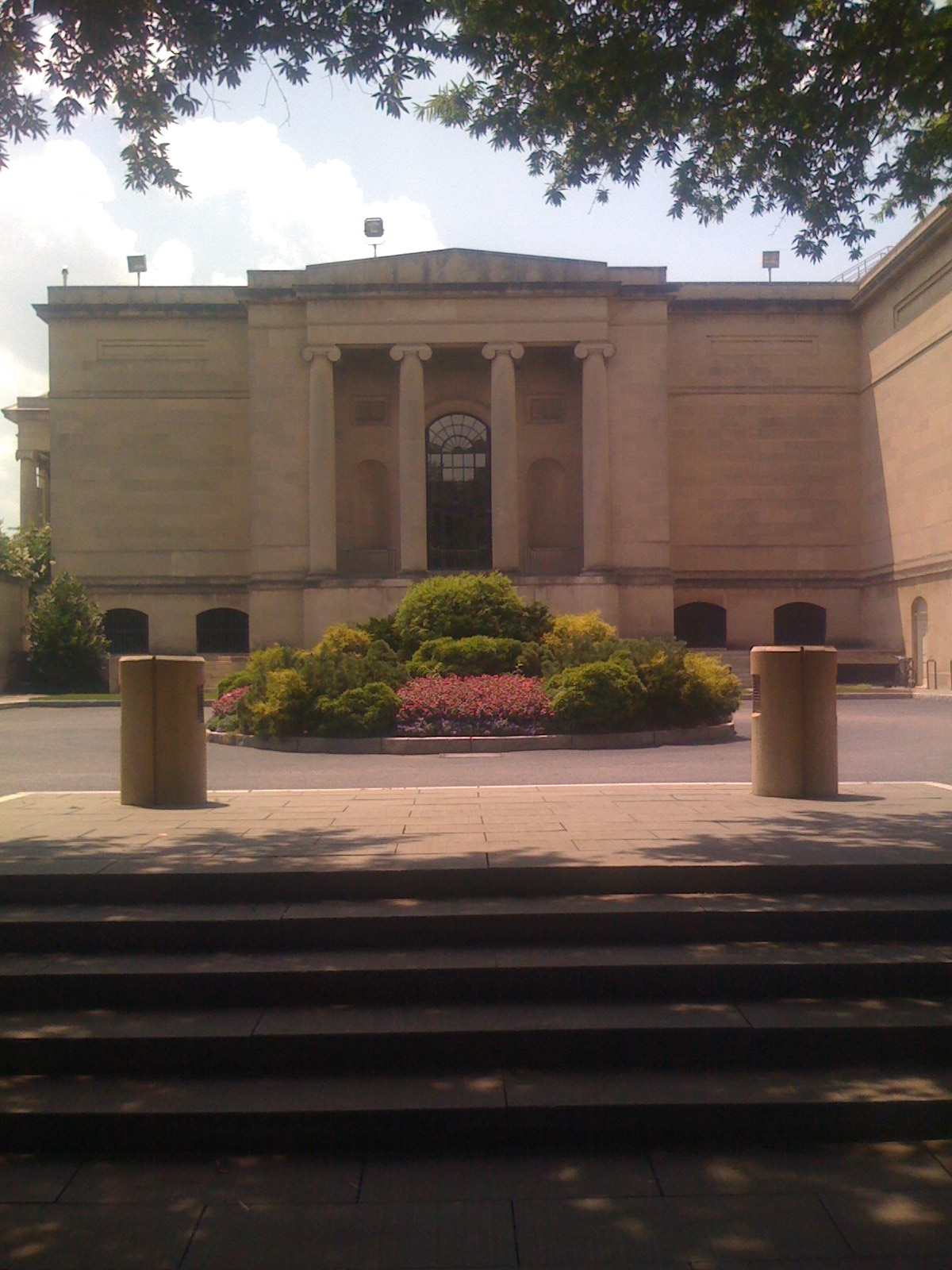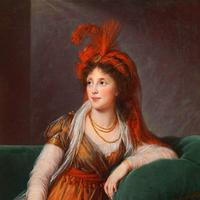More about Baltimore Museum of Art
Works at Baltimore Museum of Art

Sr. Contributor
In a way, the Baltimore Museum of Art rose from the ashes.
The city of Baltimore suffered through a catastrophic fire in February of 1904, in which much of central Baltimore was destroyed. The fire, which raged for two days, eventually leveled over 1,500 buildings and damaged another 1,000 over an area of 140 acres. This would prove to be a great motivation for the city to not only enact building and fire codes, but also would eventually pave the way for the city’s future art museum, the Baltimore Museum of Art (BMA).
The city government decided the best way to move forward was to establish a committee or “congress” to plan and design the rebuilding and recovery. One of the things they found was that Baltimore was falling behind other cities “in regard to matters of esthetic interest.” So, what to do? Build an art museum, of course! And of course there needs to be another committee, one created specifically for the planning of the museum. Building a city museum from scratch is easier said than done, but they succeeded, after a while.
One of the people on the museum committee was industrialist and art dealer Henry H. Wiegand, whose role was chairman, and who may have thought an art museum would be good for business. The museum was finally incorporated in 1914, ten years after the great fire, but still did not have a home. That’s just a minor detail though, so the collection was started with a single painting, Mischief by William Sergeant Kendall, which was donated by the head of the original planning committee, Dr. A.R.L. Dohme.
In the meantime, the “collection” would be kept at the Peabody Institute (of Johns Hopkins University fame), which was located in Baltimore. In 1916, a building was purchased for the museum, but it needed renovations; apparently an architect was hired to this, but for reasons unknown, the process did not proceed beyond that, and the building was never used by the museum. The museum did eventually move into the former home of one of the BMA’s major donors, Mary Elizabeth Garrett, but this would only be a temporary location, housing the art until 1929, when BMA arrived to its permanent home, designed by John Russell Pope. Hiring Pope was quite the coup for the BMA; he would go on to design the west building of the National Gallery of Art, as well as the Jefferson Memorial.
Once the museum opened, it proved to be immensely popular with the citizens of Baltimore and its surrounding areas; more than 25,000 people visited within the first six months of the grand opening. The fact that the museum offered free admission didn’t hurt the attendance figures. However, according to a report by the Carnegie Corporation in 1937, most of the visitors didn’t reflect the diverse makeup of Baltimore. Even the local artists were feeling left out - in a letter to The Evening Sun in that same year, the president of the Artists’ Union of Baltimore stated: “We, the living, resent being left to work in a vacuum of indifference and neglect while so much of the dead past is exhausted [by the BMA].”
The letter-writer was Morris Louis, whose work would become a part of the BMA’s collection many years later. The report (and the letter) led to a wide-ranging survey by the museum, which seems to have had the effect of drumming up support for more diverse exhibits and subject matters. First, there was the Labor in Art show in 1938, and then the first exhibit of African American art in Baltimore occurred the following year, a show which included work by Jacob Lawrence.
The free admission policy eventually caught up with the BMA, and in 1982 the city of Baltimore required the museum to start charging admission to pay for maintenance of the aging building, which now had a leaking roof, among other problems. The much-needed money helped, but also created a barrier to furthering the museum’s mission to support the local community and get more people in the door. Fortunately, the BMA got back on their financial feet and free admission was brought back in 2006, which helped bring in greater numbers of people, from all walks of life. Today the BMA hosts over 200,000 visitors a year...and did I mention it’s free?
Sources
- “Baltimore Museum of Art.” Baltimore Museum of art. http://arthistoryreference.com/t145/9612.htm.
- Helen. “Painting Sale at Baltimore Museum of Art.” USA Art News, November 10, 2020. https://usaartnews.com/art-market/painting-sale-at-baltimore-museum-of-….
- John Lewis | October 2014. “Fall Arts PREVIEW: BMA Turns 100.” Baltimore Magazine, August 5, 2020. https://www.baltimoremagazine.com/section/artsentertainment/fall-arts-p….
- Magazine, Smithsonian. “The Baltimore Museum of Art.” Smithsonian.com. Smithsonian Institution. https://www.smithsonianmag.com/museumday/venues/museum/the-baltimore-mu….
- “The Great Baltimore Fire Begins.” History.com. A&E Television Networks, February 9, 2010. https://www.history.com/this-day-in-history/the-great-baltimore-fire-be…
- jonathan5485, Author. “William Sergeant Kendall.” my daily art display, December 8, 2019. https://mydailyartdisplay.wordpress.com/2019/12/08/william-sergeant-ken….
Featured Content
Here is what Wikipedia says about Baltimore Museum of Art
The Baltimore Museum of Art (BMA) in Baltimore, Maryland, is an art museum that was founded in 1914. The BMA's collection of 95,000 objects encompasses more than 1,000 works by Henri Matisse anchored by the Cone Collection of modern art, as well as one of the nation's finest holdings of prints, drawings, and photographs. The galleries currently showcase collections of art from Africa; works by established and emerging contemporary artists; European and American paintings, sculpture, and decorative arts; ancient Antioch mosaics; art from Asia, and textiles from around the world.
The 210,000-square-foot (20,000 m2) museum is distinguished by a neoclassical building designed in the 1920s by American architect John Russell Pope and two landscaped gardens with 20th-century sculpture. The museum is located between Charles Village, to the east, Remington, to the south, Hampden, to the west; and south of the Roland Park neighborhoods, immediately adjacent to the Homewood campus of Johns Hopkins University, though the museum is an independent institution and not affiliated with the university.
The highlight of the museum is the Cone Collection, brought together by Baltimore sisters Claribel (1864–1929) and Etta Cone (1870–1949). Accomplished collectors, the sisters amassed a wealth of works by artists including Henri Matisse, Pablo Picasso, Paul Cézanne, Edgar Degas, Paul Gauguin, Vincent van Gogh, and Pierre-Auguste Renoir, nearly all of which were donated to the museum. The museum is also home to 18,000 works of French mid-19th-century art from the George A. Lucas collection, which has been acclaimed by the museum as a cultural "treasure" and "among the greatest single holdings of French art in the country."
The BMA is currently led by Dr. Asma Naeem, who was appointed in January 2023 by the Board of Trustees after a 10-month international search. She joined the BMA in 2018 as the Eddie C. and C. Sylvia Brown Chief Curator and previously held curatorial positions at the Smithsonian's National Portrait Gallery. She holds a B.A. in art history and political science from Johns Hopkins University, a juris doctor from Temple University, an M.A. in art history from American University, and a Ph.D. in art history from University of Maryland. Naeem is the first person of color and the first person raised in Baltimore to lead the museum.
Since October 2006, The Baltimore Museum of Art and the Walters Art Museum (formerly Walters Art Gallery), have offered free general admission year-round as a result of grants given by Baltimore City, Baltimore County, and several foundations. The museum is also the site of "Gertrude's Chesapeake Kitchen", a popular restaurant owned and operated by chef John Shields.
Check out the full Wikipedia article about Baltimore Museum of Art











